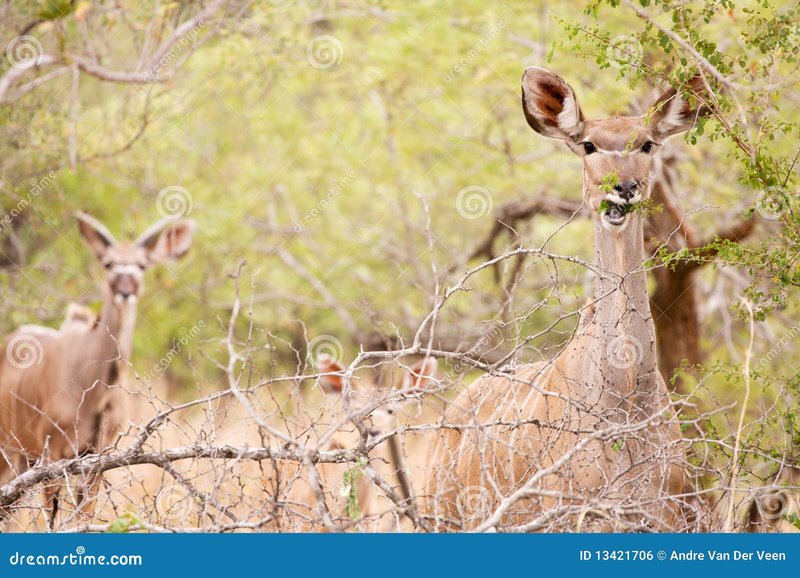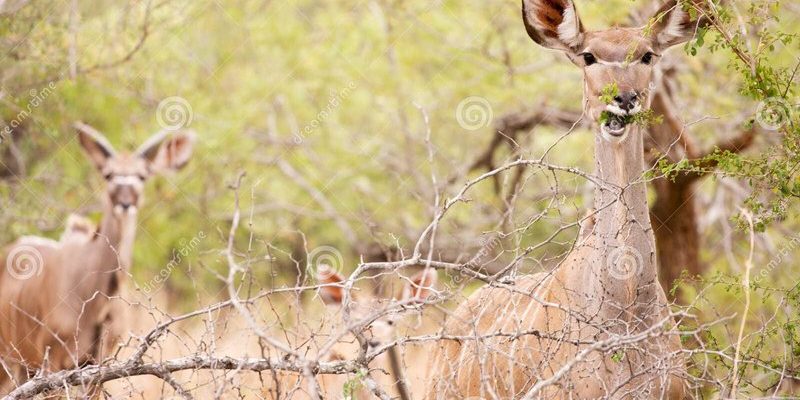
Kudus are not your average antelope. With their elegant, spiraled horns and striking color patterns, they stand out in the wild. But it’s not just their looks that make them remarkable; it’s their instinctive behaviors when raising their young. Just like a parent would watch over a child, kudus fiercely protect their offspring, ensuring they learn everything they need to thrive in their environment. You might be wondering how they do this, so let me explain the different stages and techniques involved in their nurturing process.
The Birthing Process of Kudus
Kudus typically give birth to a single calf after a gestation period of about seven months. Imagine this moment—a mother kudu, seeking a safe and secluded spot, might venture off from the herd to find peace and quiet to deliver her baby. This choice reflects their instinct to keep the calf hidden from predators.
After the calf is born, the mother will lick it clean to remove any scent that might attract unwanted attention. This nurturing act is not just about cleanliness; it strengthens the bond between mother and calf. The first few hours are critical. The calf struggles to stand up, often wobbling around awkwardly. Seeing this, the mother encourages her young one to get on its feet. It’s like cheering on a toddler taking its first steps!
Nurturing and Protecting the Calf
Once the calf is up and about, the real challenge begins. Mother kudus are known for their protective instincts; they keep a close eye on their little ones, often remaining vigilant for any signs of danger. They’ll graze nearby but maintain a watchful stance, ready to spring into action if needed.
Kudu mothers use body language to communicate with their calves. If there’s a threat nearby, she might nudge the calf or postures to signal it to stay close. If a predator approaches, the mother will often lead the calf away from danger, using her knowledge of the terrain to navigate through dense vegetation. Just think about how a human parent might swiftly guide their child away from a busy road—it’s that kind of instinctive care that keeps the young safe.
Feeding Habits and Nutrition
Feeding is another essential aspect of raising a young kudu. Calves typically start eating grass and leaves at a very young age, usually just a few days after birth. The mother encourages this behavior by demonstrating what to eat. As they graze together, she shows the calf which plants are safe and nutritious.
Interestingly, kudus prefer browsing over grazing, meaning they like to feed on leaves, shoots, and fruits from bushes and trees. This preference means that the mother has to be strategic in choosing feeding locations to ensure her calf gets a balanced diet. Imagine packing a lunch for your child but instead of sandwiches, it’s all about the freshest greens and fruits from the best trees. It’s all about nurturing their growing bodies with the right food!
Social Learning and Development
As the calf grows, social learning becomes crucial. Kudus are social animals, often living in herds. In these groups, young kudus learn from their mothers and other females in the herd. They watch closely as the adults navigate different situations, from feeding to defending territory.
Young kudus are naturally curious and will often play with other calves, developing crucial social skills. When they engage in playful behavior like jumping or running, they’re not just having fun—they’re honing their agility and coordination, which will later serve them well in avoiding predators. This playful behavior is akin to how human children learn through play, discovering their world a little at a time.
Independence and Maturity
As the young kudu approaches six months, the journey towards independence begins. At this stage, calves gradually spend more time away from their mothers but still rely on her for safety and guidance. Here’s the thing: while mothers are protective, they also encourage their young to venture out and explore. This balance helps the calf learn to survive on its own.
Eventually, around a year old, the young kudu will start to establish its own identity and may even start joining different herds to find mates. Just like a teenager moving out to start their life, this transition is an essential step in the cycle of life for kudus. They’ll always carry the lessons learned from their mothers, making them well-prepared for the challenges of the wild.
The Role of Males in Kudu Societies
While we often focus on the mothers, male kudus also play a fascinating role in their social structure. Unlike many species, male kudus don’t take part in raising the calves. Instead, their primary role comes in securing the territory and ensuring that the herd is safe.
Males will often display their impressive horns and engage in battles with other males to assert dominance. This behavior is crucial as it establishes a strong leader, which indirectly benefits the calves. A dominant male will keep predators at bay, allowing the youngsters a safer environment to grow up in. Picture the way a father figure might work hard to provide for and protect a family—that’s what the male kudus do, albeit in a very different way.
The journey of kudus raising their young in the wild is a beautiful testament to the intricate dance of nature. From the birthing process to teaching social skills and independence, every phase is important and deeply connected to their survival. Kudus show us that parenting, no matter the species, often involves protection, teaching, and a bit of letting go.
So, the next time you think about kudus, remember their graceful nurturing ways. In the wild, every action is purposeful and plays a part in the survival of their young, just as we do in our own lives. Nature has its way of teaching us valuable lessons, and kudus certainly lead by example in the wild.

